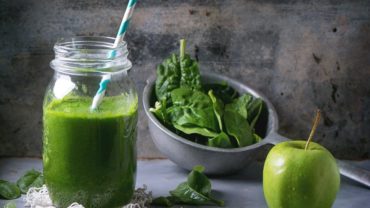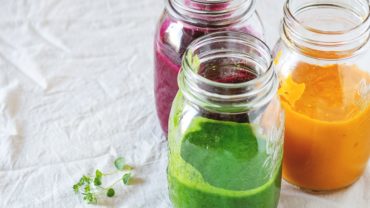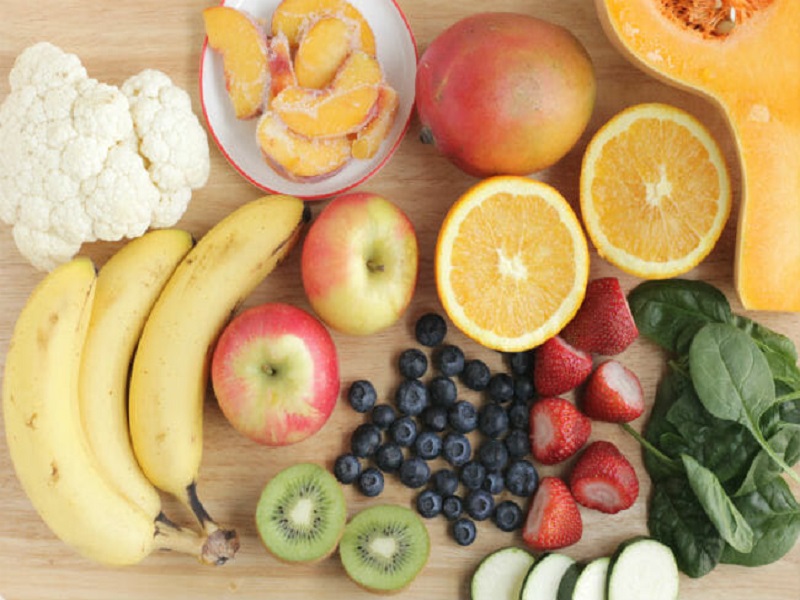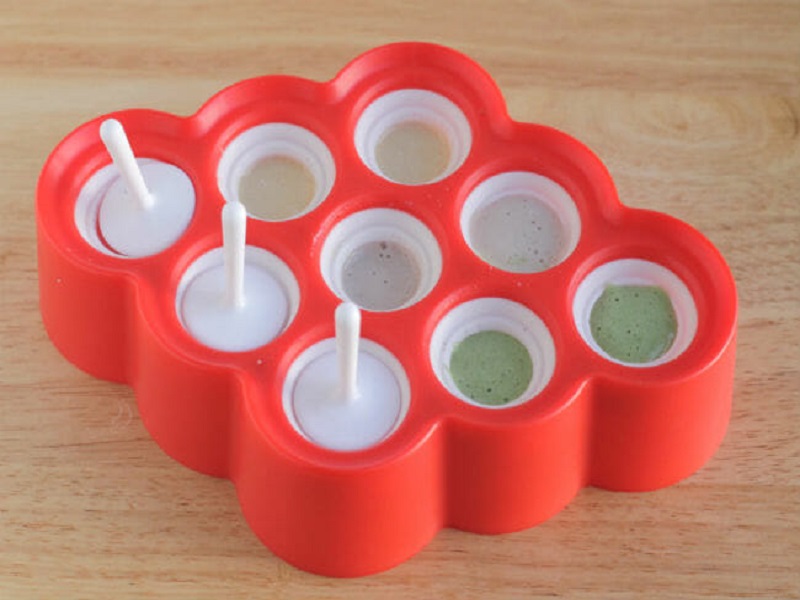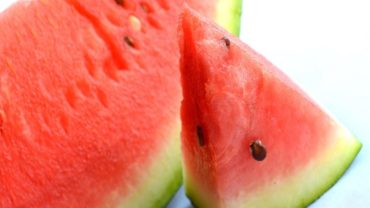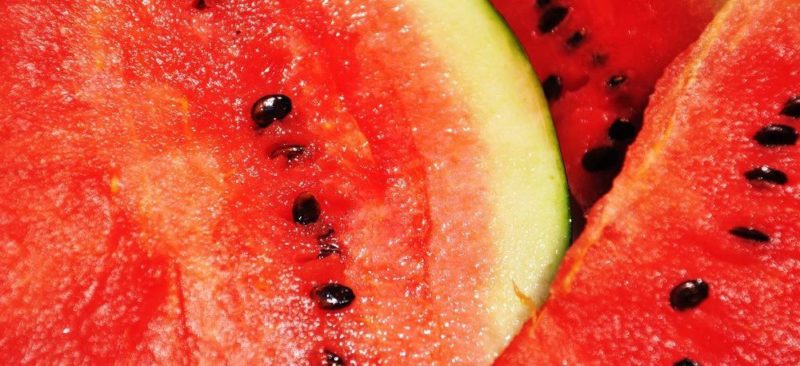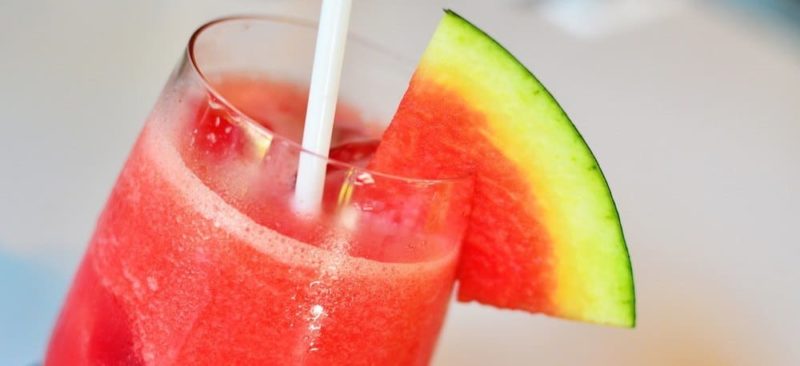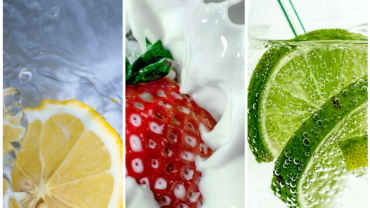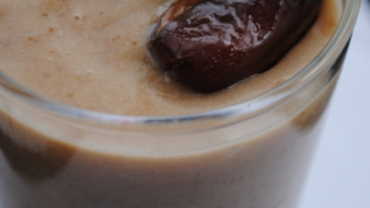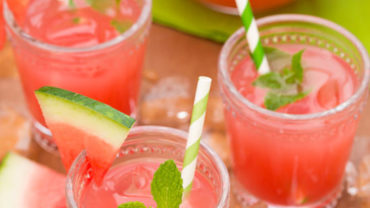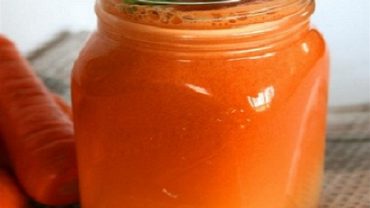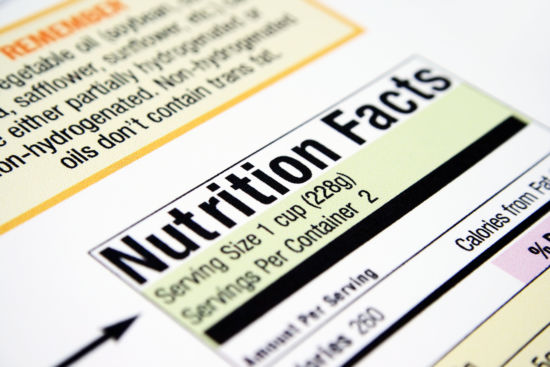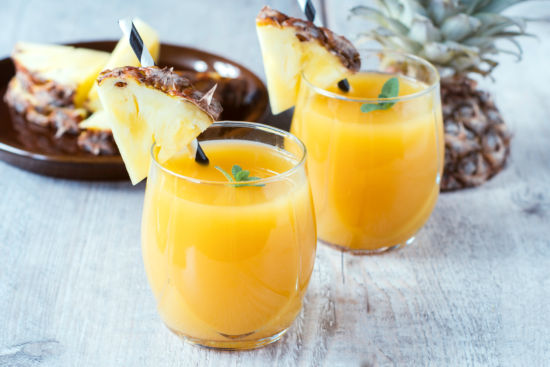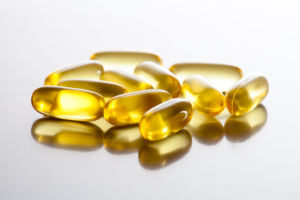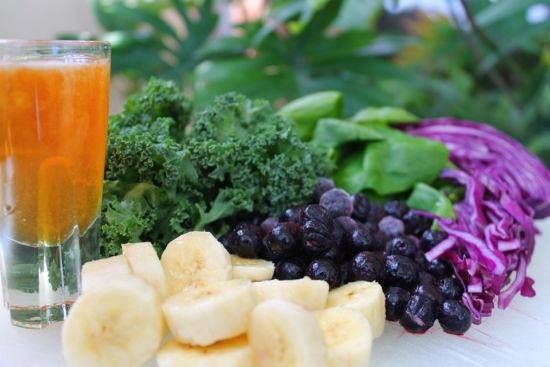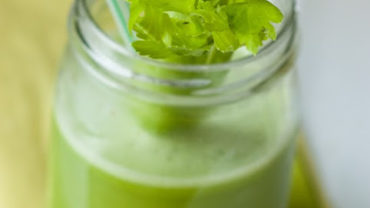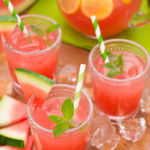via Yummy Toddler Food: These hidden-veggie toddler smoothies are simple to blend up and are even easier to customize for breakfast or snack time. They’re a perfect way to serve smoothies for kids since they’re naturally sweet so they kids will love them, and loaded with nutrition to please the parents!
One of the best ways to help your toddler and older kids eat more fruits and vegetables is to pack them into smoothies. By starting with one master smoothie recipe and varying it based on what your kids like (and for any food allergy concerns), you can increase the likelihood that they will actually drink it!
HEALTHY TODDLER SMOOTHIES
To be completely honest, my oldest has never been a fan of smoothies. Because of that, I tried very hard to get my second to like them right from the start. I make her toddler smoothies a few times a week so they are familiar and I’m happy to report that she’s a total fan. (If you have a little one who doesn’t like smoothies, see my tips below!) We love smoothies for healthy breakfasts and snacks. And it’s nice that you can keep almost all of the ingredients in the freezer or pantry!
SMOOTHIES FOR KIDS
One of the biggest reasons that she likes them is that I don’t pack them too full of extras—because if you go overboard on veggies and things like chia seeds, a kid smoothie can taste like sludge really fast. But thankfully, you can still make a healthy smoothie that’s packed with nutrition if you know how to balance the ingredients. If your toddler regularly fills up on milk at breakfast, try switching to smoothies some days. This has the benefit of allowing you to fill their bellies with a range of nutrition they need, instead of just milk.
SMOOTHIES FOR TODDLERS WHO WON’T EAT VEGETABLES
If you have a kid who won’t eat many vegetables, smoothies can be a great option since the veggies are served in a slightly sweet drink that tastes like a milkshake. Don’t add more of any vegetable than my recipe below—that could lend an off flavor. And try some of the combinations below that aren’t green first, since pink, orange, purple, or even white smoothies are often much less alarming than green ones. Then, once you have a smoothie fan, try offering a green one!
HOW TO MAKE KID SMOOTHIES STEP-BY-STEP
To help ensure a good texture and flavor in our hidden-veggie toddler smoothies, we pick just a few ingredients each time and keep the flavors simple. I try to mix things up so that she doesn’t just want one type of smoothie and I let her help turn on the blender, which she loves!
(We also don’t add things like bee pollen or collagen or protein powder because while I know that some swear by these types of smoothie boosts, I find them to be expensive and not very accessible for most people. If you like them or want to try them, by all means, go for it!)
- Choose your milk. (We prefer nondairy milks since they seem to have a slightly better consistency and less of a tendency to separate after blending.)
- Choose a ripe banana plus an extra fruit.
- Choose a veggie.
- Choose an optional add in to add more protein, fiber, or healthy fats.
- Blend the smoothie really well to ensure that it has a very creamy texture.
- Serve it in a reusable pouch, a small open cup, or in a sippy cup depending on what your kid likes best.
SMOOTHIES FOR TODDLERS WITH FOOD ALLERGIES
If your toddler has food allergies, it’s easy to adjust a smoothie for them. If they are allergic to bananas, use 2 tablespoons avocado instead or try a teaspoon or two of nut butter. Use whichever type of milk you prefer—almond, flax, coconut, rice, dairy, or even kefir. We tend to use Silk Protein Nut Milk, Ripple Milk, or New Karma Flaxmilk in our smoothies.
HOW TO HIDE VEGGIES IN SMOOTHIES
- If you can store the greens in the freezer, the finished product will taste much less “green” but will have the same nutrition. Just make sure the greens are dry, then put them into a zip top freezer bag and store in the freezer for up to 3 months.
- Blend really (really!) well to get a very smooth consistency, adding a little more milk (or even water) as needed to thin.
- You can get a less thick texture in toddler smoothies, which some kids prefer by using fresh fruit rather than frozen—and this is also a good option for winter days when a frozen drink is less than ideal.
- You can use yogurt in place of milk if you add a fruit with a lot of liquid like a clementine or orange.
- Try using half milk and half yogurt for a creamier texture some toddlers may prefer.
- Serve toddler smoothies in a reusable pouch (we like Squeasy Gear!) or in a cup with a straw.
- You can also offer small tastes with a spoon if you have a child who isn’t yet a fan. Consider even a small sampling a success!
- Sprinkle on some granola or a favorite cereal and serve as a smoothie bowl for a fun variation.
- And if nothing else works, freeze them into popsicles!
SMOOTHIES FOR KIDS WITH CONSTIPATION
If your toddler has frequent constipation or a sudden bout, a smoothie with hidden veggies can help move things along. Consider adding extra fiber from chia seeds or hemp seeds, or even a small spoonful of coconut oil, flaxseed oil, or avocado. You can also use full-fat coconut milk as the base. The healthy fats can coat the digestive tract, making it easier for food waste to pass through. And, since the foods in toddler smoothies are already blended, it’s much less work for their digestive systems!
SMOOTHIES FOR TODDLERS TO GAIN WEIGHT
If your doctor has told you that your toddler needs to gain weight, a smoothie can be a helpful mealtime tool. Consider adding nut butters, avocado, healthy oils (flax, fish), full fat yogurt, hemp seeds, and offering a serving of a toddler smoothie at snack time, mealtime, or as a bedtime snack. Use those in between times to get in a little extra nutrition and calories! (Also, be sure to ask your doctor if your toddler is on her own growth curve—she may actually be progressing at a normal rate for her own body!)
via Health Ambition: Watermelon is surprisingly good for you and recent research is showing that eating this sweet tasting melon, and particularly drinking it as fresh juice, can have some significant health benefits.
Here’s 6 good reasons to eat more watermelon, or better still, make up watermelon juice with a simple instructions ahead.
1. Lycopene for Your Heart, Skin and Cancer Prevention
Lycopene is responsible for the beautiful red color of watermelon pulp. It is a powerful antioxidant, known to protect your cardiovascular system from free radical damage and studies have shown people who eat a lot of lycopene rich foods have a lower instance of heart disease.
Lycopene benefits also include protecting your skin from UV damage that can lead to photo aging, wrinkles and skin cancer. A big glass of watermelon juice before heading to the beach could provide a little extra antioxidant protection against ultraviolet light on your skin.
Research has even found a lower incidence of many other cancers with a higher intake of lycopene rich foods in the diet. This large meta-study of the protective effects of lycopene against cancer found evidence for a reduction of colon, stomach, prostate, pancreatic and lung cancer with higher lycopene intake from foods.
The simple takeaway is, if you’d like to help protect your heart, skin and body from cancer, then have more heathy lycopene foods like watermelon. Tomatoes are another great source, with guava and pink grapefruit also containing good levels of the antioxidant.
2. Citrulline for Better Blood Flow
The amino acid citrulline is found in particularly high amounts in watermelon juice. Citrulline can be converted in your body into arginine, an essential amino acid for improving blood flow and relaxing blood vessels.
This positive effect on your cardiovascular system can have some interesting health benefits, from relaxation when stressed, to more energy with better blood flow and reducing muscle soreness after exercise.
There has even been suggestions that the health benefits of watermelon juice could include a natural ‘Viagra’ like effect in the bedroom. For someone lacking in arginine in the diet, the high citrulline content of watermelon may just save them the prescription.
3. Weight Loss Benefits
The same amino acid citrulline that watermelon juice is so rich in, has also been shown in animal studies (due to its conversion to arginine) to interfere with the accumulation of fat in fat cells. It does this by blocking the effects of an enzyme called TNAP involved in fat storage.
Animal studies are hardly conclusive, but drinking a glass of watermelon juice before a meal is great for hydration, high in nutrition and very low in calories – all helpful for losing weight.
4. Anti-inflammatory Watermelon Juice
Eating watermelon or drinking the juice before heavy exercise can have an anti-inflammatory effect, according to this research. Watermelon is rich in flavonoids, carotenoids like lycopene and beta-carotene and other compounds that fight inflammation called triterpenoids.
All of these beneficial health nutrients increase the more you allow a watermelon to ripen. So once you buy them, make sure you let your melons ripen for a while and turn fully red before you eat or juice them.
5. Vitamins and Minerals
While perhaps not as impressive as its antioxidant carotenoids or unusual amino acid content, watermelons still contains useful levels of vitamins and minerals.
In the vitamins, watermelon is particularly high in vitamin C, as well as having more than enough beta-carotene that could be converted into vitamin A in your body if needed. There are also smaller amounts of B vitamins.
Potassium and magnesium are well represented in watermelon’s minerals, and particularly if you juice or blend it, the seeds contain good levels of iron and zinc.
6. Watermelon Juice for Kidney Health
Watermelon juice is great for your kidneys, having a highly cleansing effect when you drink it. It helps to flush out ammonia and uric acid and has even been known to help with kidney stones.
Watermelon seeds can have an even more pronounced effect on your kidneys, so it’s recommended to buy your watermelons with the seeds if you’re using the juice for kidney cleansing.
How to Make Watermelon Juice
To begin, scrub the outside of the watermelon you intend to use for juicing with a scrubbing brush and apple cider vinegar to remove any sprays or waxes.
Cut off a portion of the watermelon to juice, perhaps a quarter of a large one would be enough for 2 people. Sizes vary greatly though so go with your own judgment, remembering watermelon is over 90% water.
Chop up the watermelon, including the green skin and rind, into strips just thin enough to fit into your juicer feed. The rind is full of many of the beneficial nutrients detailed above so well worth including in juicing. With the sweetness of the red center you won’t taste it in your watermelon juice.
Here’s an interesting way to make watermelon juice in just 60 seconds!
Once you’ve chopped your watermelon into strips that can fit into your juicer, simply turn it on and slowly feed them through.
A good masticating juicer like this is far superior for making watermelon juice (and just about every other kind of freshly made juices as well, particularly green juices). Cheap centrifugal juices will generally have a very damp pulp after juicing, but a masticating juicer gets almost all of the goodness into your glass.
As soon as you’ve finished, drink your watermelon juice immediately for the best taste and the most health benefits. I hope you enjoy it. Your body certainly will.
Studies have found that 30% of the children in the United States are having two or more sugary kids’ drinks a day which provide more than 10% of the total daily calories among the children. This amount of sugar consumption is way higher than the recommended level provided by the US dietary guidelines.
Over consumption of sugary kids’ drinks is an issue that all parents need to pay attention on as it can easily lead to serious ailments such as childhood obesity, kids’ cavities, dyslipidemia (or high cholesterol in kids) and type 2 diabetes.
If you are concerned about your kids, health, trying out some kids-friendly beverages to replace your kids’ favorite sugary drink is a smart way to get started with.
Watch the following video now for 4 recipes of low sugar drinks for kids that you should try today!
4 Low-Sugar Drink Swaps For Kids
Share with your favorite healthy parent.Recipes here: http://bzfd.it/2GPXnuqGet the reclosable drink pouches here: 👉 http://amzn.to/2EWKjTF 👈
Posted by Playfull on Sunday, February 25, 2018
As a health-concerned mom, you have most probably come across different healthy milkshakes for your kids, but have you ever heard of the famous Date Milkshakes from California?
We present you the ultimate recipe to make your own cream, healthy Date Shake at home today:
It is easy to get nutritious juice, with the right tools and the right advice. Juice can form a valuable part of any diet. Getting started with juicing is not difficult, but a some sensible hints are essential. Read on and we will provide some tips on how to get started, and how to get better juice.
You can maximize the health benefits of your juicing routine by drinking your juice fresh – immediately after producing it – whenever possible. Some of the most beneficial nutrients in juice are extremely time-sensitive and begin to break down rapidly. By drinking the juice you make as soon as you make it, you can get as many of these important nutrients as possible.
Use cucumber as a great flavor disguiser when you are juicing greens. Cucumber is excellent at masking the strong flavors inherent in greens. A juice’s health benefits aren’t going to do you much good if you can’t stand to drink it. Cucumber also has the extra added benefit of being chockfull of important vitamins and nutrients itself.
Detoxing the colon is fun and easy by juicing! Apples and lemons are an excellent choice for a detox recipe as they both are known to help cleanse the colon. You can also include beets, carrots, celery, ginger, and radishes. Almost any juice you make will help to heal your body, so feel free to use whatever items you really enjoy.
If you’re serious about juicing, you should dedicate a cool, dark area of your house to storing produce which can be kept long-term. For example, apples can be kept in the garage over the winter as long as they’re not allowed to freeze. Just wash them, get rid of any bad ones, and store them in a covered but breathable container.
While juicing add some fish oil or cod liver oil. These two types of oils will help with the absorption of vitamin K. The fats from fish oil are very beneficial for health and gives you the right amount and the right kinds of fat needed for vitamin K absorption.
When it comes to juicing, one thing that you want to keep in mind is that not all fruits taste good when combined with each other. This is important to consider in terms of taste and overall enjoyment of your juice. Probably the most difficult fruit to mix would be certain types of melon.
A great juicing tip is to not overdo it if you’re relatively new to juicing. Our bodies need time to adjust to changes. If you start drinking super healthy green juices, you might find yourself making several trips to the bathroom every day. Moderation is the key when it comes to juicing.
In this article we have discussed some essential tips to get you informed and enthusiastic about juicing. We hope the article will help you to become a happy, healthy juicing fan. Juicing doesn’t have to be a passing fad, you can make it an enjoyable and health-giving aspect of your daily routine.
- Cut the watermelon in cubes
- Blend the water melon with ¼ cup water
- Add ½ lemon juice.
The juice can be made earlier before your bedtime.


